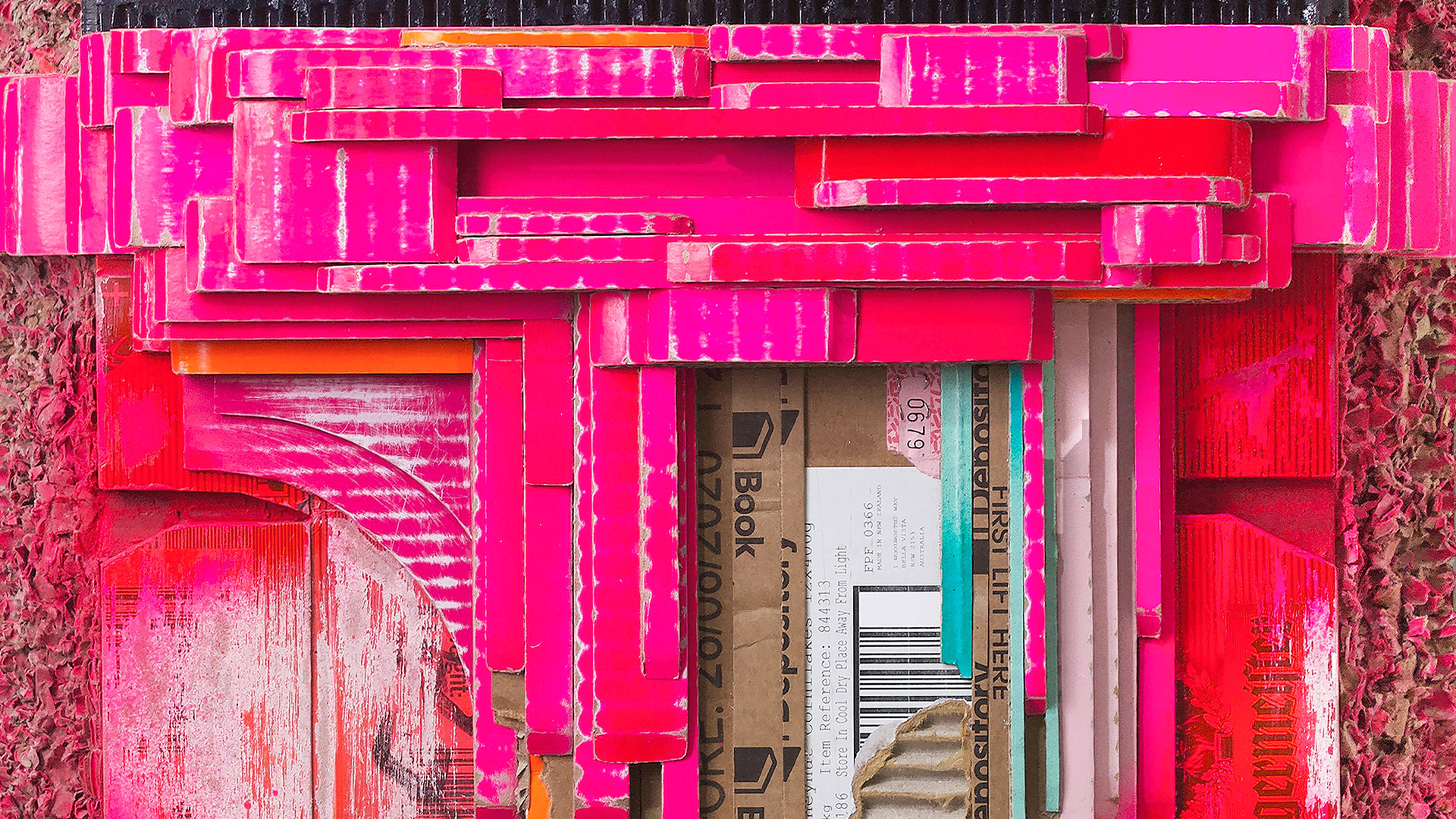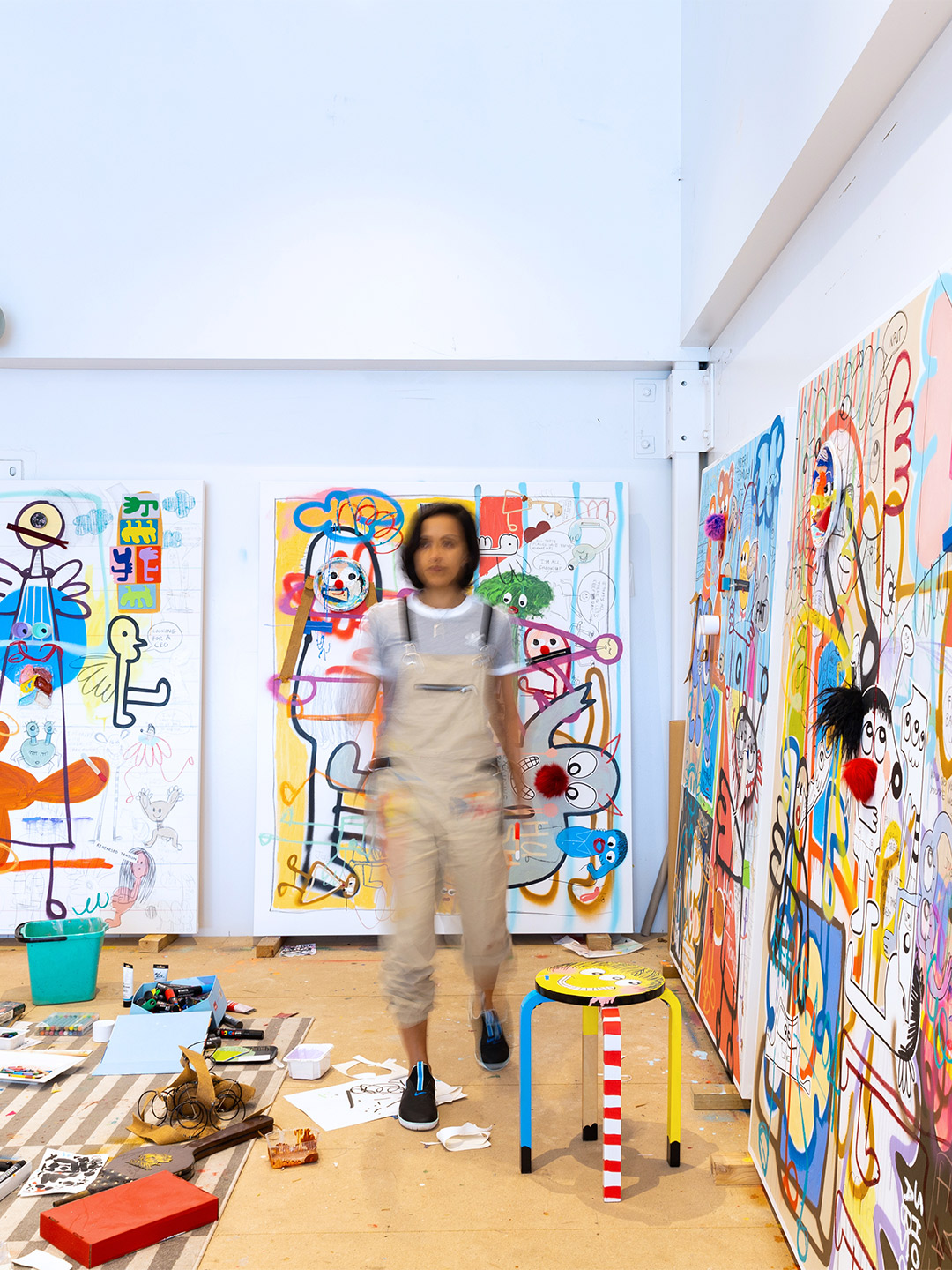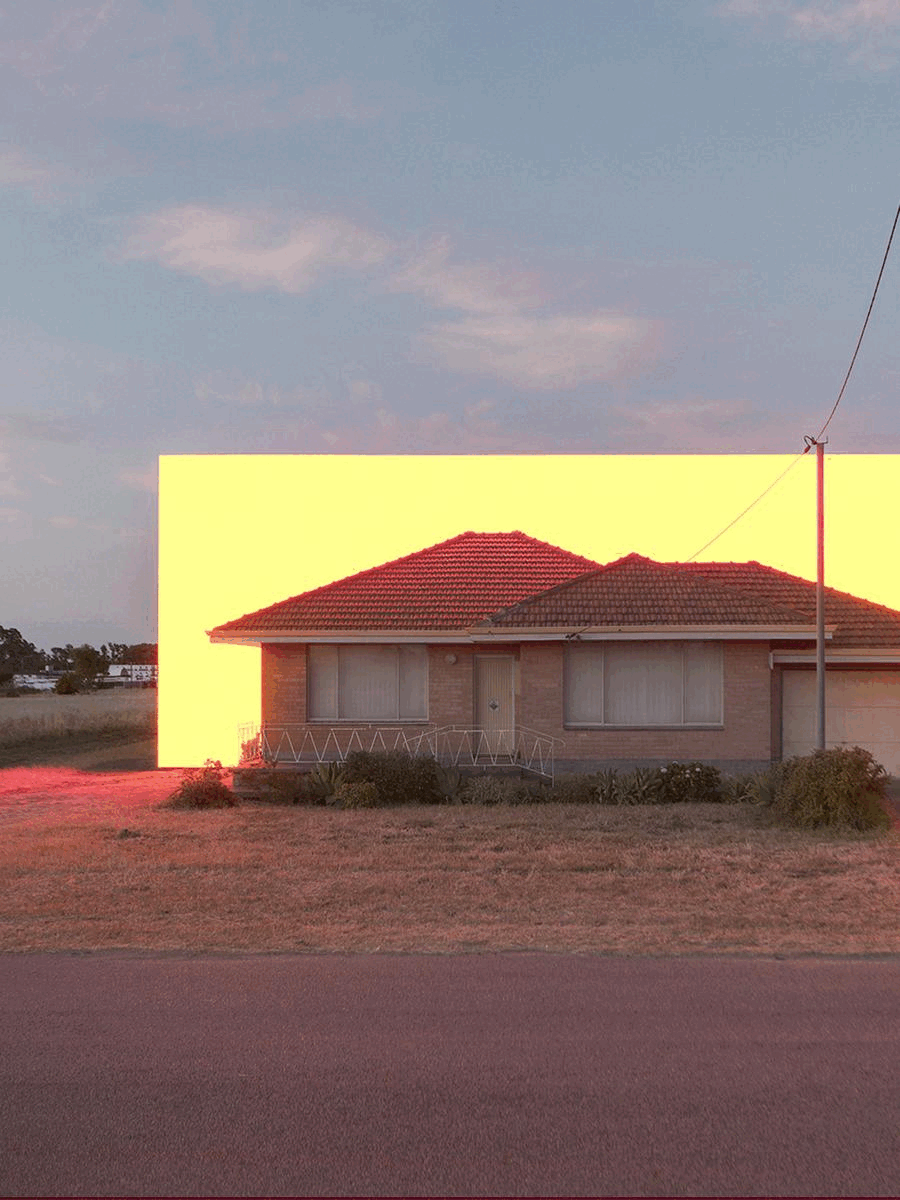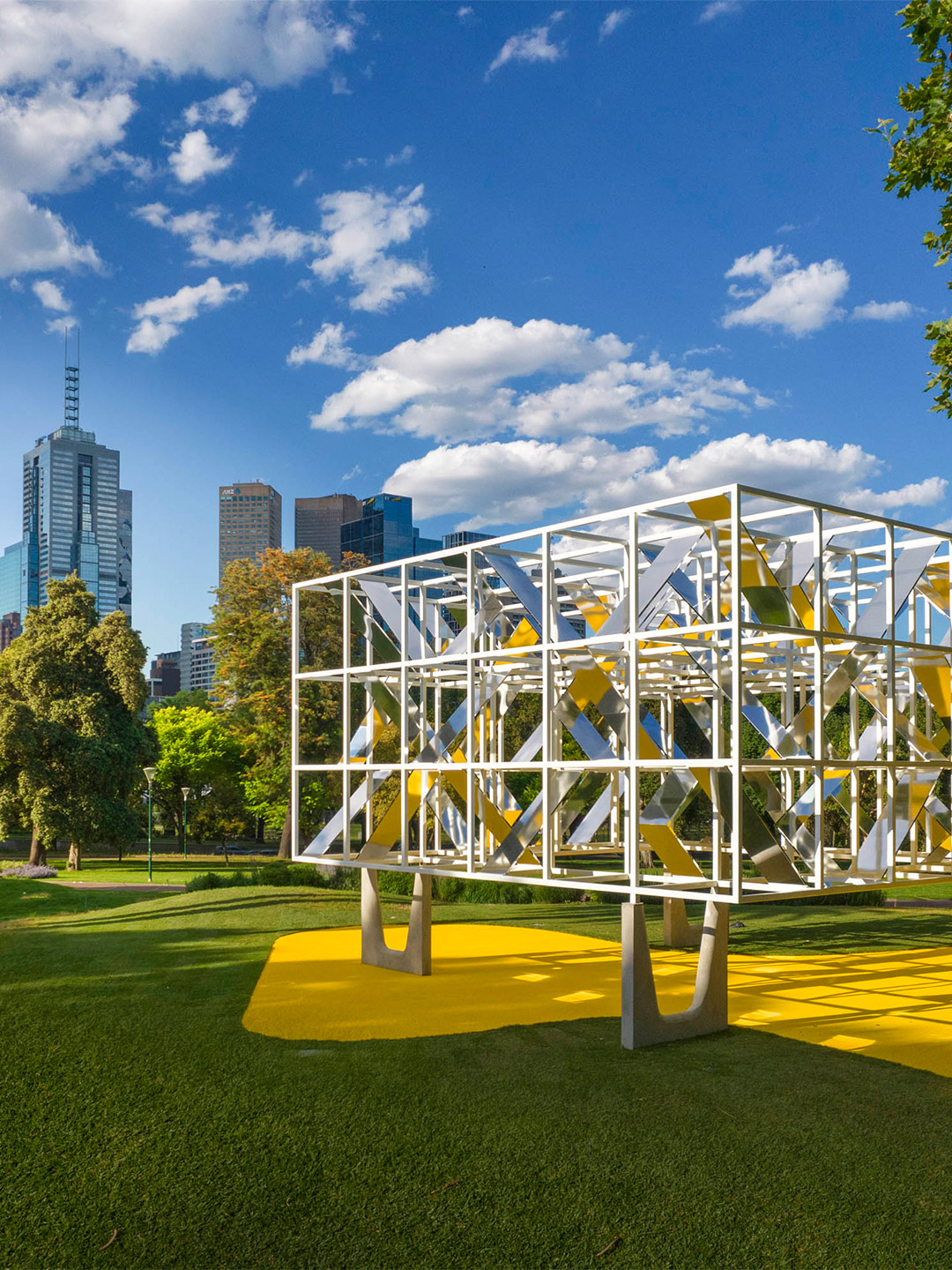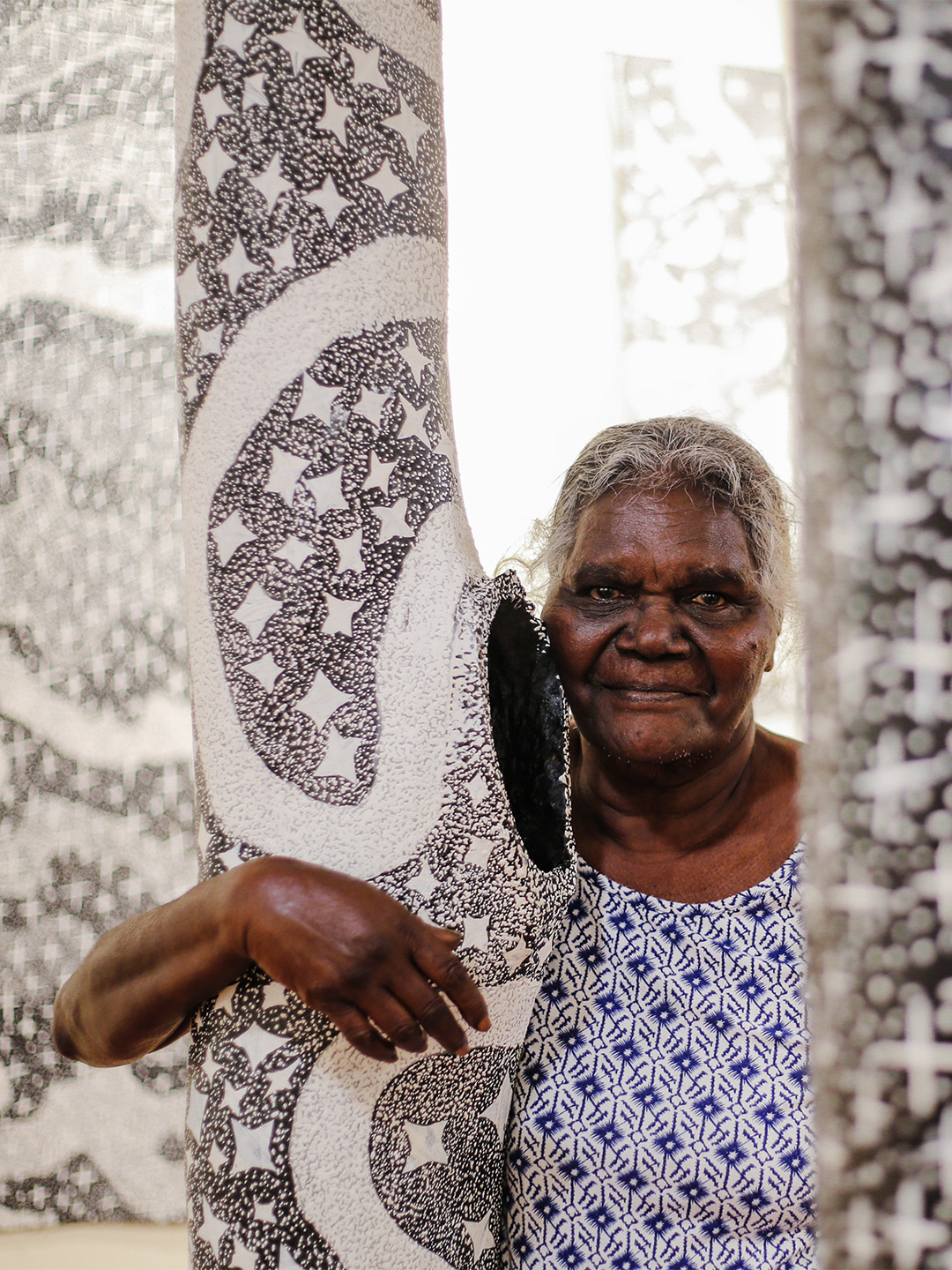Swept up in consumerism, it’s not often that the waste which we so nonchalantly wheel to the kerb is considered as the potential foundations of poetic beauty. But for artist Patrizia Biondi, rescuing junked cardboard – what she refers to as “the icon of consumerism” – and then slicing, layering, manipulating and composing it into quasi-architectural wall sculptures is an assiduous process that delivers considerable personal liberation.
DAN caught up with Patrizia for a brief chat following her show ‘Language Can Make Pure Wind Look Solid’ at Sydney’s Artereal Gallery to hear about her art-making practice, influences and her atypical studio ritual.

DAN: Can you to tell us about yourself and your approach to making art?
Patrizia Biondi: I have always had an awareness of socio-political issues given that I grew up in Italy during a period of history now known as the ‘years of lead’. The term is a reference to bullets, from the significant number of shootings and terrorist attacks during a time of social and political upheaval that spanned over two decades to the late 1980s. However, those years were not just about the unprecedented terrorism; they were also witness to workers protesting for better rights, feminist uprisings against a traditionally patriarchal society, student strikes and political assassinations.
Italy was experiencing one of its most revolutionary periods, so I was growing up in a society that was caught in the midst of all that anger, fear and unrest, as well as one of hope and monumental changes. Furthermore, I lived in the city of Naples which, up to the early 1980s, was in the grip of territorial wars waged between organised crime cadres. I guess that such an upbringing affected the way I conceive my presence in the world and my connection to it, in the sense that even though I have always pursued my passion for art, in my mature years I have learnt to ground my artistic practise in the social reality that it emerges from, therefore in its problems. That way, I know that my vocation is somehow playing a discursive role and hopefully being of some relevance, no matter how tiny.

DAN: What is a current or an ongoing source of creative inspiration for you?
PB: I need to create beauty, thus I see my artistic practice as a site of transmutation, a process wherein alchemical reactions take place – a place where a set of formalisms is deployed to transform something into something else. Society has a fixation with polar opposites – acceptance and rejection, greed and contentment, success and failure. In my world, however, everything is fluid, in a state of constant flow and evolution, transformation and transmutation. It is the idea of such movement that propels my artistic practice.
I have always been attracted to waste materials because my imagination can find the potential for beauty in the most unusual places. Lately it is cardboard because packaging is, par excellence, the icon of consumerism. I feel acutely concerned about the destructive corollaries of excessive consumer practices which characterise the western world at the moment. Obsolescence, landfill, land contamination, methane emissions and competition are just a few of the perils.
The very act of cleaning the cardboard, cutting it and transforming it delivers a sense of liberation from the grief that often ails me. My pain is centred on the plight of all non-human life extinguished at the hands of humans because it doesn’t have a voice to protect itself. Egalitarianism is a cognitive and moral issue, an all-encompassing matter that goes way beyond the human sphere.

DAN: Your recent show at Sydney’s Artereal gallery titled ‘Language Can Make Pure Wind Look Solid’ was created during a particularly tumultuous time in the world. How did this climate impact the collection, and do you think it will have a lasting influence on the way you make art?
PB: During the lockdown, images of India’s poor and marginalised communities were emerging in mass media, showing migrant workers having to trudge many miles to reach family. It was truly heart wrenching and made me even more sad and angry about this massive gap between poverty and privilege. At the same time, I was also reading about pollution levels dropping to historically low levels as a consequence of industry and transport shutdown. I hoped that governments would seize this opportunity to revisit regulations around mining, the use of fossil fuels and all other polluting activities.
Then the big let-down arrived, as it now seems apparent that Australia plans to embrace mining and extraction more aggressively than before. Building industry incentives, gas industry expansion. Lessons have not been learnt from Australia’s black summer of 2019. Nor have we learnt from the fact that even a pandemic of a zoonotic virus is an integral element of our ecological problem as human invasiveness strips animals of their natural habitat. And it’s always, always because of the economy mandate. So, now, I am even more resolute in making artwork containing symbols of greed and ignorance.

DAN: Career highlight so far?
PB: Many and varied, throughout my practise. Fifteen years ago I owned my own brand of accessories, making sculptural handbags with recycled industrial wire. I was sponsored twice by Promote Australia Week in Singapore to take my artworks over there and promote Australian made. They were proud moments. I also collaborated with the Chinese headquarters of a major mobile phone maker to launch their art-deco designer line of telephones.
But these days, that somehow feels like another person’s life. Maybe it’s because, after all those years of a certain type of artistic practice, I gained a visual arts degree. That, more than anything else, was a game changer; a major highlight in my career. It opened up for me an exciting new world of thinking and understanding. Two days after my graduate exhibition I received an approach from a renowned European gallery, Annarumma, to do a fully funded residency and solo exhibition in Italy. Imagine my glee when I discovered that Annarumma, which now represents me, would take me back to my native home of Naples.

DAN: What are the most covetable pieces on your wish-list?
PB: Top of the list I definitely place one of Nicolas Party’s beautiful landscape paintings. They are the epitome of beauty; one look at them and you are immediately transported into a fable. Next would have to be a Frank Stella sculpture and, last, though not by any means least, Mark Bradford’s intricate paper collage works.

DAN: Is there a project that you are most looking forward to in the future?
PB: Yes. My PhD, for which I am writing the proposal as we speak. The proposition is about the arts in relation to deep ecology and … Oops, I won’t say more than that, for the time being.

DAN: Sky’s the limit: what’s a dream project for you?
PB: I would love to collaborate with the United Nations in writing a global covenant on banning the use of ecologically poisoning plastics such as PVC. I would like to write a global covenant on the mandatory global use of recyclable packaging materials. Failing that, I have lots of small goals which are probably more realistic, while also producing art, of course.
For example, I would love to research and write about ways to teach in schools the notions of ethics, solidarity and empathy as foundational elements of life. I would also love to work on such research projects together with the Australia Institute in Canberra, whose work I hugely admire.
Then I would like to assemble into a cogent whole the myriad of maquettes for large scale pieces which have been sitting in my studio and which are meant for installation proposals to certain art institutions on my list.

DAN: Finally, art-related or otherwise, can you tell us something we probably don’t know about you?
PB: I am compulsive about cleaning, tidiness and organisation. When you visit my working space you would probably ask yourself if you are in some kind of storage area because of the flat cardboard boxes neatly stacked up. My paints, paint brushes, tools, are all neatly stored away in cabinets, so you would wonder if you are really in an artist studio. Except that my works are hanging all around and that gives it away.
The truth is, even my working space has to be ‘beautiful’. I don’t work well in a dirty environment. Disorganisation doesn’t do it for me, either. Imagine that you are in the throes of creativity and then you have to stop that amazing momentum and spend ten minutes to find your pliers. Nah. Can’t do that.

Follow Patrizia Biondi on Instagram.
